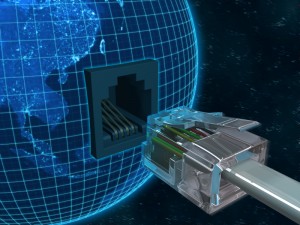IP Clock Systems in Hospitals
In the healthcare industry, failure is not an applicable option. The moral obligation healthcare professionals possess requires them to do everything they can in the most effective way possible, otherwise experiencing both psychological and legal backlash. Many healthcare executives fail to take notice that time is one of the most crucial factors in medical practices. In a hospital, a two-minute difference can decide whether a person lives or dies, whether a new born will have to be in an incubator or not, and so on. Time-related problems in hospitals, and other facilities of the sort, primarily occur in the scenario where certain clocks are not receiving the signals being transmitted by the time source. Due to certain rooms in a hospital being far away or in certain thicker-layered rooms, sometimes getting the accurate time to those rooms can be difficult, causing delay issues. IP clock systems are a solution to this problem.
A problem that has been crippling the healthcare industry for the longest time, and is still at large, is lawyers being quick on the trigger with class action healthcare lawsuits. The reason for the high propensity of lawsuits is because these medical complications are most of the time avoidable. A huge reason why these complications occur is because the clocks in the hospital are not uniform in regards to the time they display. Despite the fact that for some industries these couple of minutes in difference hardly makes any impact, this is emphatically not the case with the healthcare industry. The few minutes that are out of synch between clocks at a hospital can decide the fate of a patient. For example, a diabetic patient needs a certain dosage of medicine precisely 60 minutes after a surgical operation. Those 3 minutes can decide whether or not the patient’s incisions become infected or not. The examples can go on for pages. The fact of the matter is that, in the eyes of many legal experts, not having total unification among the clocks in an established can be translated into a failure to take the necessary protocols to ensure safety for all of the patients.
Traditional clock systems, while being generally adequate in many industries, leave room for error. In an IP clock system, the reliance on signals is minimized. Rather, each clock holds an IP address, much like the ones in a computer or cable modem, which is filtered into a software program. This allows users of the system to simply go onto the software program and type in the IP address to edit the time or make sure that it is in synchronization with the other clocks in its system. This alleviates the issue of non-unity among the scattered clocks in an establishment.
Although there is no foolproof way of avoiding all complications, especially in the medical profession, factors such as the time being displayed on the clocks of a hospital should not be an issue that doctors and administrators have to worry about. These responsibilities, although trivial, can make or break a healthcare professional’s reputation, something that should not be dealt with lightly. A synchronized clock system, specifically an IP clock system, can make the already stressful job of a healthcare professional a little bit easier. The cost the comes with purchasing an IP clock system can be seen as a wise investment, especially in the eyes of professionals that are vulnerable to feel its harshest wrath if there is an issue due to failure of compliance.

